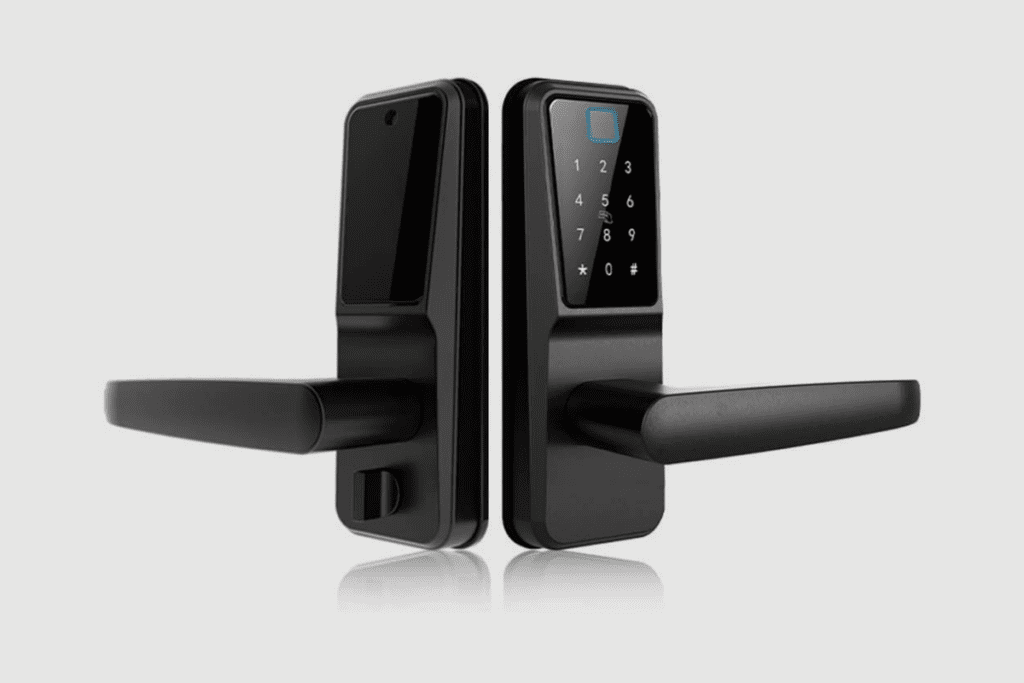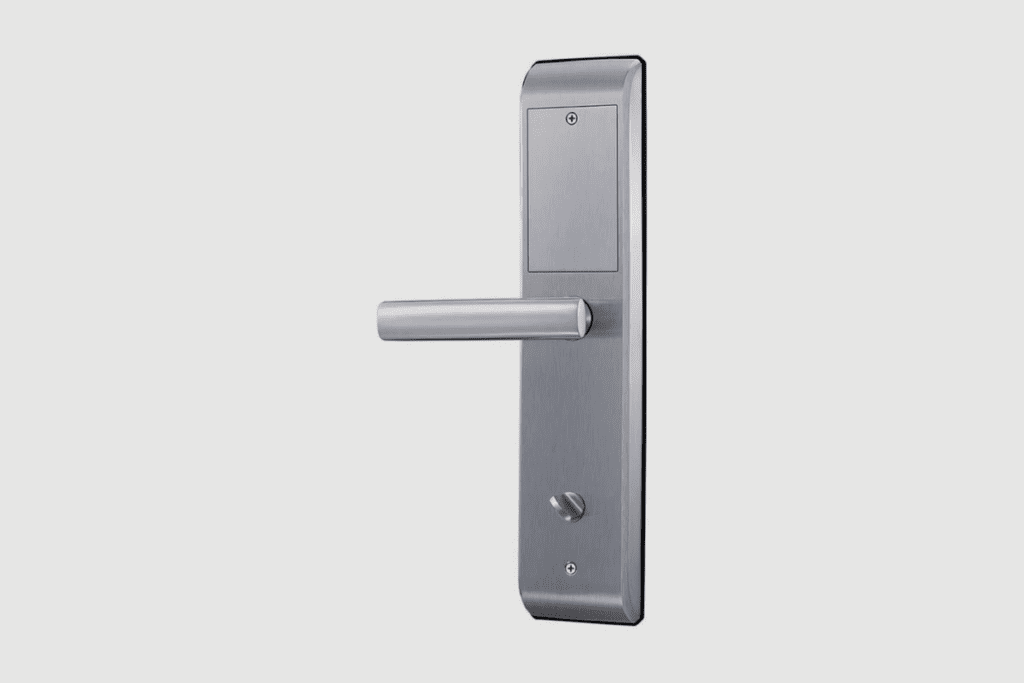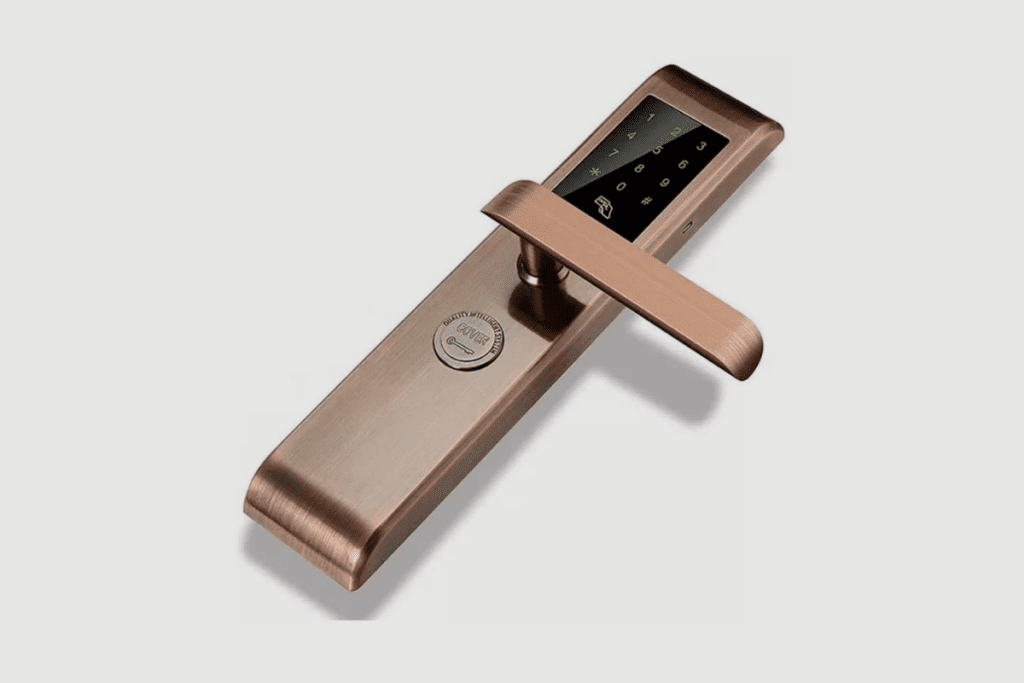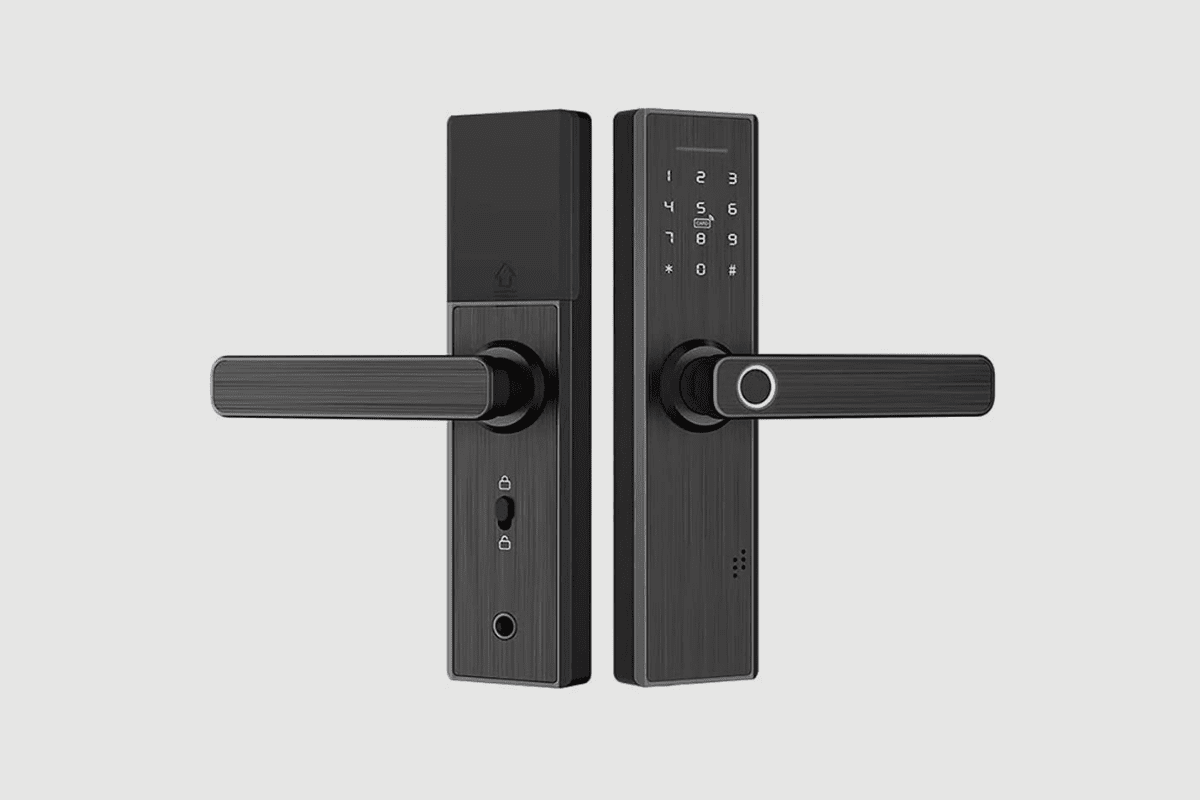Electric door locks are an improved and safer way to protect both public and private places or properties, and they also add additional automation features like remote locking or unlocking.
They help lock and unlock doors as well as monitor whether doors are locked or not, and this can be achieved through a mobile application, cars and so on.
Electric door locks are available in cars, homes and apartments. Most cars come with a fob that lets you unlock your door from a distance, and these electronic door locks are becoming more prevalent in homes now.

What are Electronic Locks?
An electronic lock is a locking device that uses an electronic control system to open and close a lock. The electronic control system may be operated by a keypad, key card, fingerprint reader, or other input devices. Electronic locks are used in a variety of applications, including residential, commercial, and industrial settings.
Electronic locks offer a number of advantages over traditional mechanical locks. For example, electronic locks can be programmed to allow access only during certain times of the day or to restrict access to certain areas.
Additionally, electronic locks can provide an audit trail, which can be useful in tracking activities within a facility. There are a few disadvantages to electronic locks as well. For example, if the power goes out, the lock may become inoperable. Additionally, electronic locks are susceptible to hacking, which may allow unauthorized users access to the facility.
Do Electronic Locks use Electrical Current?
Yes, electronic locks use an electrical current to operate. The current is used to power the locking mechanism and to keep the lock engaged. When the current is interrupted, the lock will release and allow the door to be opened.
Also, the electrical current is used to either power an electromagnet, a solenoid which is an electromagnet with a single coil or a motor.
This locking mechanism will actuate the lock in a way that is either fail-safe or fail-secure. In simpler terms, an electronic door lock is a lock powered by electricity.

Types
- Fail-safe: It opens on the side of ingress when there is a power outage or emergency alarm because the electrical current is used to keep the door locked, and removing power disengages the locking mechanism
- Fail secure: this is the opposite of a fail-safe as it uses the electrical current to draw back the bolt. When there’s a power outage, the bolt remains locked.
- Electric strike: This type can be fail-safe or fail secure. It is installed either on a doorframe or double doors. It is made often times for exiting a building.
- Electromechanical locks: This type uses either fail-safe or fails secure. In the fail-safe version of this lock, the electric current will cause the bolt in the lock to stay extended, while the fail-secure version will use the electrical current to retract the bolt and it will remain locked until power is re-established to the system.
- Electromagnetic locks: It is one of the most common types of magnetic locks. It uses a magnet that is created when a current is moved through a wire with multiple coils around an iron core or a solenoid. When the current is disrupted, the metal wire is no longer magnetised.
- Electric latch retraction: It is uniquely designed to be fail-secure, and as the name implies, electric latch ” retraction”, the bolt retracts when electrical current is applied
Electronic Door Locks
Electric door locks use actuators that move the bolt of the locks into place, and the door opens by just triggering the actuator.
Electronic door locks also involve parts called “actuators,” which connect the bolt or the cylinder to a small motor completely buried within the door or frame itself.
The motor is controlled by an electrical impulse, which may be triggered in a number of ways: by an electronic card reader, by a keypad or by a wireless remote control sensor. Either way, the electronic door lock is configured to start the motor-driven actuator only once it has received the correct electronic input.
Electronic door locks replace the key with something else like a code, wireless remote, and an automation app that is called smart locks and with these smart locks, you can lock and unlock your door from anywhere in the world. These advanced locking systems not only enhance convenience but also improve security by allowing you to monitor access to your home in real-time. Some models even integrate with home security systems, such as smart locks compatible with SimpliSafe, making it easier to manage your home security all in one place. With features like temporary access codes for guests and alerts sent directly to your smartphone, smart locks provide peace of mind for homeowners everywhere. These innovative locks often come equipped with features like keyless entry, temporary access codes for guests, and activity logs that keep track of who has entered and exited your home. Many users appreciate the convenience of having smart locks compatible with Alexa, allowing them to control their door locks through voice commands. This not only enhances security but also simplifies everyday routines, making it easier to manage access without the need for traditional keys.

Electronic Mode Of Entry
An electronic door lock needs an electronic signal to open and close. This can be done with an electronic key, which functions just as a key does, not necessarily a traditional key. These modes of entry explain the types of electronic door locks explicitly. Some of these modes of entry include:
Coded Entry
This type of electronic door lock requires a keypad that is placed outside the door for entry, and one has to put in the correct passcode chosen by the user to gain access.
Smartphone operated lock
With this type, you can lock and unlock your doors through your smartphone. They allow you to check-in from anywhere to see if you locked your door or unlocked the backdoor for visitors’ entry while you are away. You can preset lock and unlock times. Some include monitoring features so you can get alerts if an unauthorised person tries to gain entry to your home. Many of these smart locks are also equipped with voice control capabilities, making them even more convenient for users who prefer hands-free operation. Additionally, some models are smart locks compatible with Google Home, allowing you to integrate them into your existing smart home system seamlessly. This means you can lock or unlock your doors with simple voice commands while enjoying peace of mind knowing your home is secure.
Biometric
With this entry type, you just have to place your finger in the Door Lock to gain entry. Most biometrics door locks can store a picture of your fingerprint, and there are Other options like voice-activated and eye scanners.
Authentication Token
Some electronic doors use this mode of entry. Authentication tokens are physical devices required to interact with locks, for example, swipe cards and key fobs. The downside to this type is that they can get lost or damaged. There are some locks on the market powered by a special key fob; by just touching the lock, the door opens.
Surveillance locks
Surveillance locks require users to enter codes to open them and take pictures of anyone who manages to open them and get in.
A radiofrequency device is also called a radio frequency identification device (RFID) which is similar to an authentication token, but the signal of this can unlock the door from far away, unlike an authentication token, where you need a direct line of sight for the device to unlock.

Pros And Cons Of Electronic Door Locks
Pros
● Multiple usages: There are multiple modes of using electronic door locks, such as the use of fingerprints, keyfobs and smartphone access
● No need to carry keys around: You do not always have to carry your keys with most electronic door locks unless you want a key-fob option. This is a nice feature for people who misplace or are forgetful; it is enough reason to want to purchase an electronic door lock
● Electronic door locks are not easy to break into.
● Easy to revoke access: Unlike physical keys that are easy to duplicate, codes can be changed. Some locks even allow one-time access codes, so you do not have to worry about anyone entering your house without your permission.
Cons
● Power outage: Power outages are a major problem for purely electronic door locks. Electronic door locks, as the name implies, show that they are powered by electricity; therefore, in case of a power outage, you will not be able to get into your apartment, or the house may be unlocked, and you would be at risk of burglars.
● Changing batteries: One has to remember to change batteries when they are down.
● Electronic door locks can get hacked since the use of keycodes makes it susceptible to hackers
● Codes can be easily forgotten, especially if you change them frequently
● Fingerprint issues: Just as one might have issues with a smartphone’s fingerprint access, it can be the same with an electronic door lock. To avoid this, look for a lock with a low false rejection rate (FRR).
● Extra cost: Some features require extra billings in the form of monthly fees for monitoring services or app access

How To Keep Your Electronic Door Lock Safe
There are ways to keep your electronic door locks from becoming vulnerable to hackers. Practising these precautions will keep your electronic door locks from being an easy target for break-ins:
- Regularly update your password
- Do not share your password with strangers
- Update the mobile application linked to your door lock.
Conclusion
There is a lot to put into consideration when it comes to electronic door locks. This article will help to determine what to look out for when purchasing an electronic door lock. You must choose a lock that fits your personal security requirements and budget.

